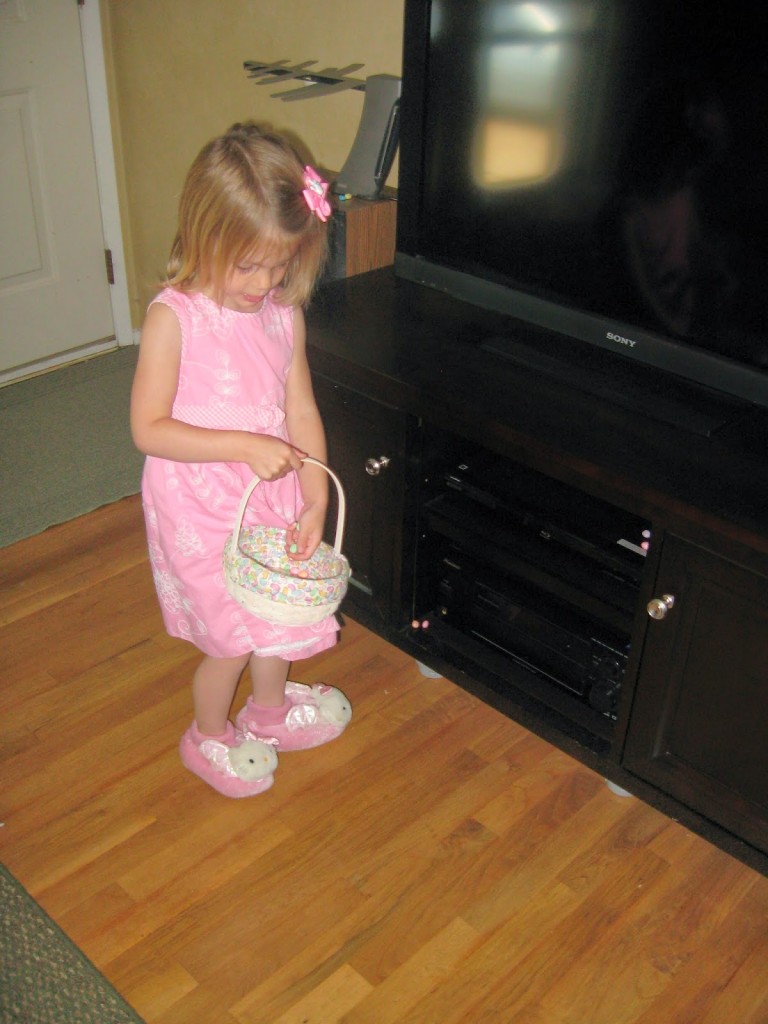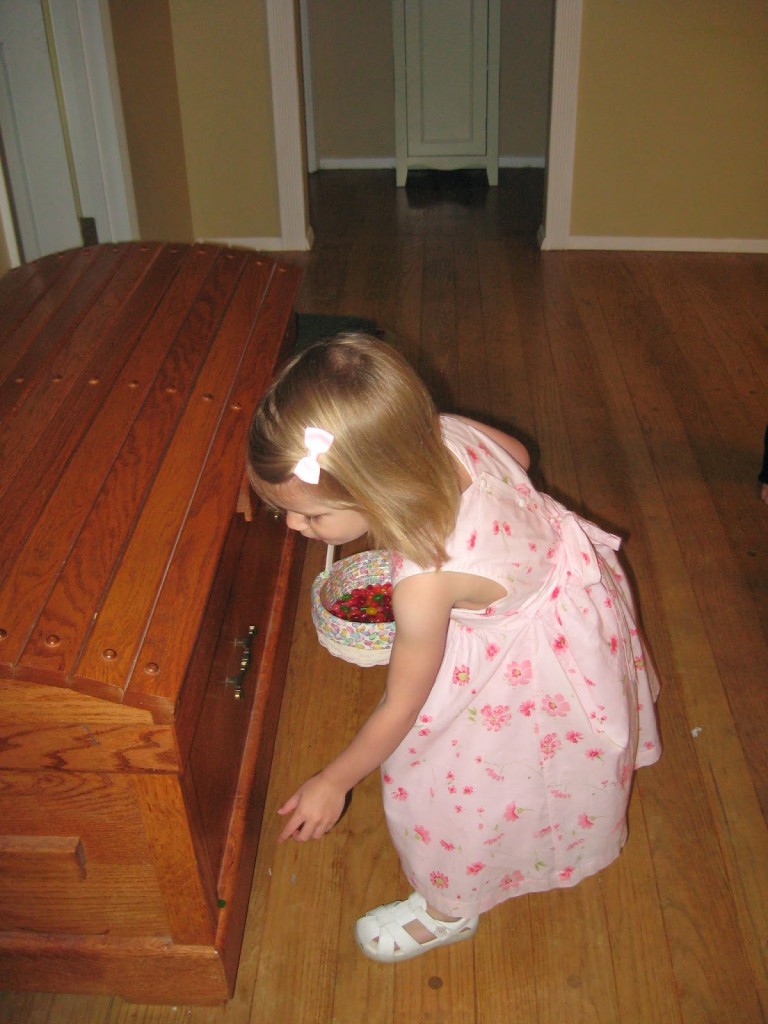I’m a tree hugger. I recycle everything from cans to cardboard to junk mail. I maintain a compost pile behind our backyard shed. I keep a stash of cloth napkins for my family to use. I turn out the lights when I leave a room, and I adjust the thermostat before leaving the house for the morning. I like my 1,000-square foot house and our fuel-efficient vehicles because they have smaller carbon footprints. I shop at the local farmers’ market and grow some of my own veggies and herbs at home.
I’ve noticed certain holidays are not so environmentally friendly. There’s Christmas with all the gift wrap and packaging, most of which are recyclable, thankfully. Mardi Gras and St. Patrick’s Day come with lots of gaudy beaded necklaces and bangles that get tossed in the trash later. Then there’s Easter, a holiday during which people feel compelled to purchase cheaply made little plastic eggs by the bagful, along with fake plastic grass. Some of that plastic may contain harmful products like lead or BPA. All those small trinkets also require energy and natural resources to produce – not to mention the fuel it takes to ship them from China where they’re manufactured. That wouldn’t be so bad if plastic eggs were things we actually kept and used for the long term. The reality is most of them end up clogging landfills once the holidays are done.
Every year my kids collect gadzoodles of plastic eggs from family and community celebrations. We save some to play with or to use the following Easter. I often dump the excess in our curbside recycling bin in hopes they might be recycled, but a brief Google search indicates most community recycling centers probably don’t accept plastic eggs. I’ve tried to get rid of them in garage sales, offering a giant grocery bag full of them for a quarter, but everyone has too many plastic eggs of their own back at home. One of my friends returned the plastic eggs her
kids got at a local egg hunt to the community center. She told the office staff she didn’t need them and maybe they could use them for next year’s hunt. They gave her puzzled looks, and we’re not sure what they actually did with the eggs.
 For small family celebrations, it is possible to have fun during Easter without plastic eggs. My siblings and I hardly saw a plastic egg when we were kids. Our family did an indoor hunt with jelly beans and small chocolate eggs wrapped in colored foil. My parents would hide single jelly beans, or sometimes they grouped them in pairs, around the living room and dining room. They nestled in (freshly dusted) corners of bookshelves, on the piano keys, next to the VCR, in the lamp shades, and on end tables and dining chairs. It kind of grosses me out now, but my siblings and I were delighted to find foil-covered chocolate eggs in our shoes lined up by the front door. Sometimes we forgot to check in a shoe and found an egg days later when we pushed our toes against it. My family’s tradition lives on with my young daughters.
For small family celebrations, it is possible to have fun during Easter without plastic eggs. My siblings and I hardly saw a plastic egg when we were kids. Our family did an indoor hunt with jelly beans and small chocolate eggs wrapped in colored foil. My parents would hide single jelly beans, or sometimes they grouped them in pairs, around the living room and dining room. They nestled in (freshly dusted) corners of bookshelves, on the piano keys, next to the VCR, in the lamp shades, and on end tables and dining chairs. It kind of grosses me out now, but my siblings and I were delighted to find foil-covered chocolate eggs in our shoes lined up by the front door. Sometimes we forgot to check in a shoe and found an egg days later when we pushed our toes against it. My family’s tradition lives on with my young daughters.
Another way to celebrate Easter without so many plastic eggs is to use real hard-boiled eggs (just be sure to follow food safety guidelines and don’t leave eggs out of the fridge too long). You can also use more natural types of materials to make reusable containers or bags in which to hide treats. Try making handcrafted wool felt eggs, painting nesting dolls to look like bunnies, or crafting felt bunny bags. Craft treat holders out of recycled toilet paper or paper towel rolls that can be tossed in the recycling bin when Easter is done. You can also use hollow wooden eggs. You can also consider going easy on the candy and giving small toys like jump ropes or consumable gifts like markers and paint.
For an alternative to the fake plastic grass, try shredded paper, which is recyclable and less toxic if the cat decides to have a nibble. Most of the time, I don’t put any type of “grass” in the baskets. Who wants to waste time fishing around in that stuff to find the jelly beans?
For the plastic eggs that do find their way into our house from community or family venues, I’ve got a few ideas. Maybe I’ll turn them into little teacups, bumblebees, or alphabet matching games. Who knew there were so many ways to reuse eggs?
How do you celebrate holidays in an earth-friendly way?
First time here? Like Mumbling Mommy on Facebook to continue the conversation!
Tags: earth friendly









